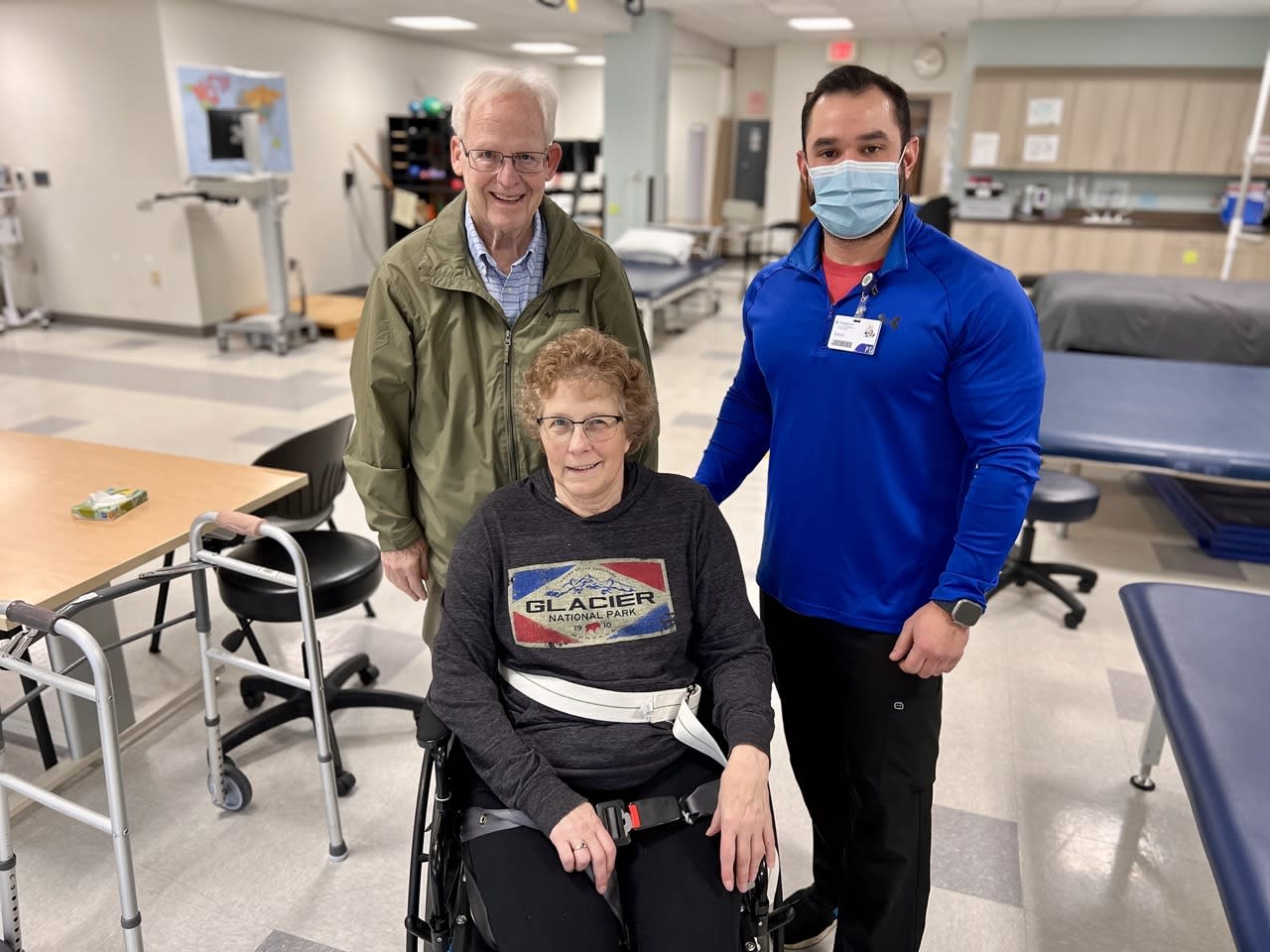Winter Workout Safety Tips
How to stay warm, dry, and injury-free during cold-weather exercise.
Winter is a great time to enjoy outdoor activities like skiing, snowshoeing, or hiking, but it also comes with challenges and risks for your health and safety. Cold weather, icy surfaces and reduced visibility can increase the chances of injuries, frostbite, or hypothermia.
Dr. Andrew Gomez with Providence Sports Medicine shares some tips on how to prepare for and prevent common winter hazards so you can have fun and stay fit without compromising your well-being.
Tip 1: Dress in layers to protect your body.
One of the most important things to do before heading outside is to dress appropriately for the weather. Wear clothing that keeps you warm, dry, and comfortable allowing you to adjust to changing conditions.
The best way to do this is to dress in layers. Layers trap air between them, which acts as insulation and helps regulate your body temperature. You should have three types of layers:
- A base layer wicks moisture away from your skin, such as wool, silk, or synthetic fabrics.
- A middle layer provides warmth, such as fleece, down, or wool. Depending on how cold it is, you may need one or more mid layers. You can add or remove this layer depending on how cold or hot you feel.
- An outer layer protects you from wind, rain, and snow, such as a waterproof and breathable jacket and pants. Look for features like zippers, vents, or hoods that let you adjust the airflow and ventilation. Consider carrying a backpack or fanny pack to store your extra layers. You may also want to wear a hat, gloves, scarf, and boots to cover your extremities and prevent heat loss.
Protect your hands, feet, ears, and nose from frostbite, a condition where the skin and underlying tissues freeze and become damaged. Frostbite can cause numbness, pain, blisters, and even permanent tissue loss.
To prevent frostbite, wear gloves or mittens, warm socks and boots, a hat or headband, and a scarf or mask covering your face. Check your skin regularly for signs of frostbite, such as white, gray, or blue patches, and seek medical attention if you notice any symptoms.
Tip 2: Protect your joints.
Another common injury that can occur in winter is knee and joint pain, resulting from slipping, falling, or overusing your muscles and ligaments. To prevent knee and joint pain, wear shoes or boots with good traction and support and avoid walking or running on uneven or slippery surfaces.
Be sure to warm up properly before your activity and stretch your muscles and joints afterwards. If you feel any pain or discomfort in your knees or joints, stop your activity and apply ice or heat to the affected area.
Tip 3: Stay hydrated and energized.
During cold weather exercise, you may not feel thirsty or hungry, but you still need to replenish your fluids and calories. Dehydration and low blood sugar can impair your performance, judgment, and coordination. It can also increase your risk of hypothermia, a condition where your body temperature drops below normal and affects your vital organs.
To prevent hypothermia, drink water or sports drinks before, during, and after your activity, and avoid alcohol and caffeine, which can dehydrate you and make you lose heat faster. To keep your energy level up and maintain your body heat, eat snacks that are high in carbohydrates and protein, such as nuts, dried fruits, granola bars, or cheese.
Tip 4: Consult a physician first.
Despite the benefits of exercise, it’s important to be safe and consider risks. Talk with your doctor about your personal risk factors prior to initiating an exercise routine. If you have a history of prior surgeries, asthma or other pulmonary disease, cardiovascular disease, and/or other musculoskeletal issues, ask your doctor about safely engaging in an exercise program.
Moving from couch potato to winter weekend warrior?
Anyone starting a new workout regimen would first benefit from a thorough evaluation by their doctor. Once risks are assessed and you are cleared for physical activity, slowly increase physical activity to avoid injury or aggravate existing conditions. Try 20 minutes one week and 25 minutes the next week. Being too enthusiastic and progressing too quickly may result in setbacks, injury or feeling overwhelmed.
Also, increase activity and reduce the amount of time sitting still in general. Couch time coupled with screen time (or sitting in general) is even more hazardous. Excessive screen time is associated with poor sleep, high blood pressure, poor cholesterol, obesity, and decreased stress regulation.
Get active outside.
Outdoor exercise in winter can be enjoyable and beneficial for your physical and mental health, but it also requires some extra preparation and caution. By following these tips, you can reduce the risk of injuries and illnesses, and make the most of your winter workouts. Remember to consult your doctor before starting any new exercise program and listen to your body and the weather conditions. Stay safe and have fun!
Learn more and find a doctor.
If you or someone you know needs physiatry or sports medicine rehabilitation services, Providence Swedish is ready to help.
Providence Virtual Care connects you face-to-face with a nurse practitioner who can review your symptoms, provide instruction, and follow up as needed. If you need to find a physician or advance practice clinician, use our Find a Doctor directory.
RELATED RESOURCES
Providence Physiatry & Sports Medicine moves to Colby campus
Everett sports medicine doctor says, ‘Don’t wait until the pain is unbearable’
Why does your young athlete need an annual sports physical?
This information is not intended as a substitute for professional medical care. Always follow your health care professional’s instructions.




